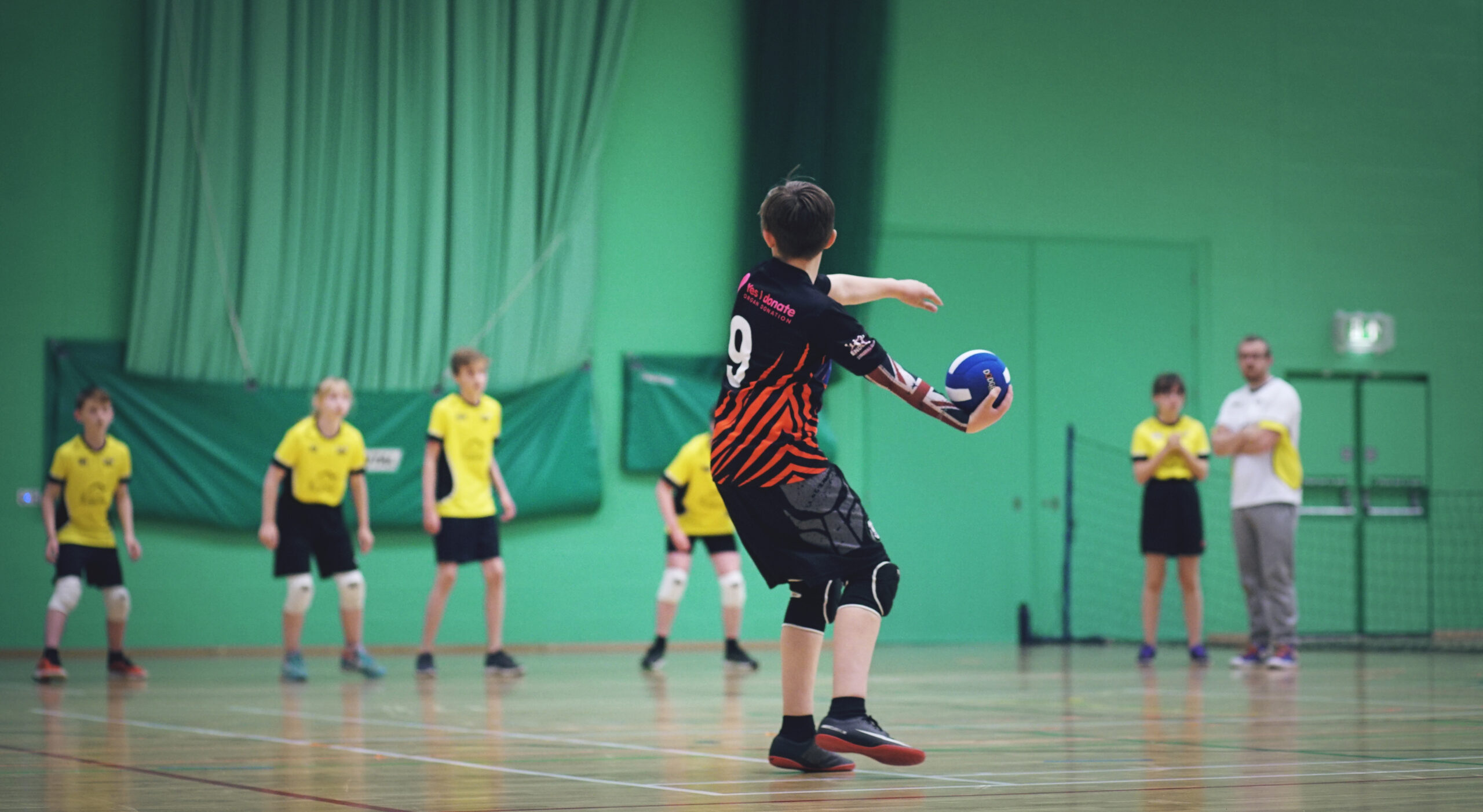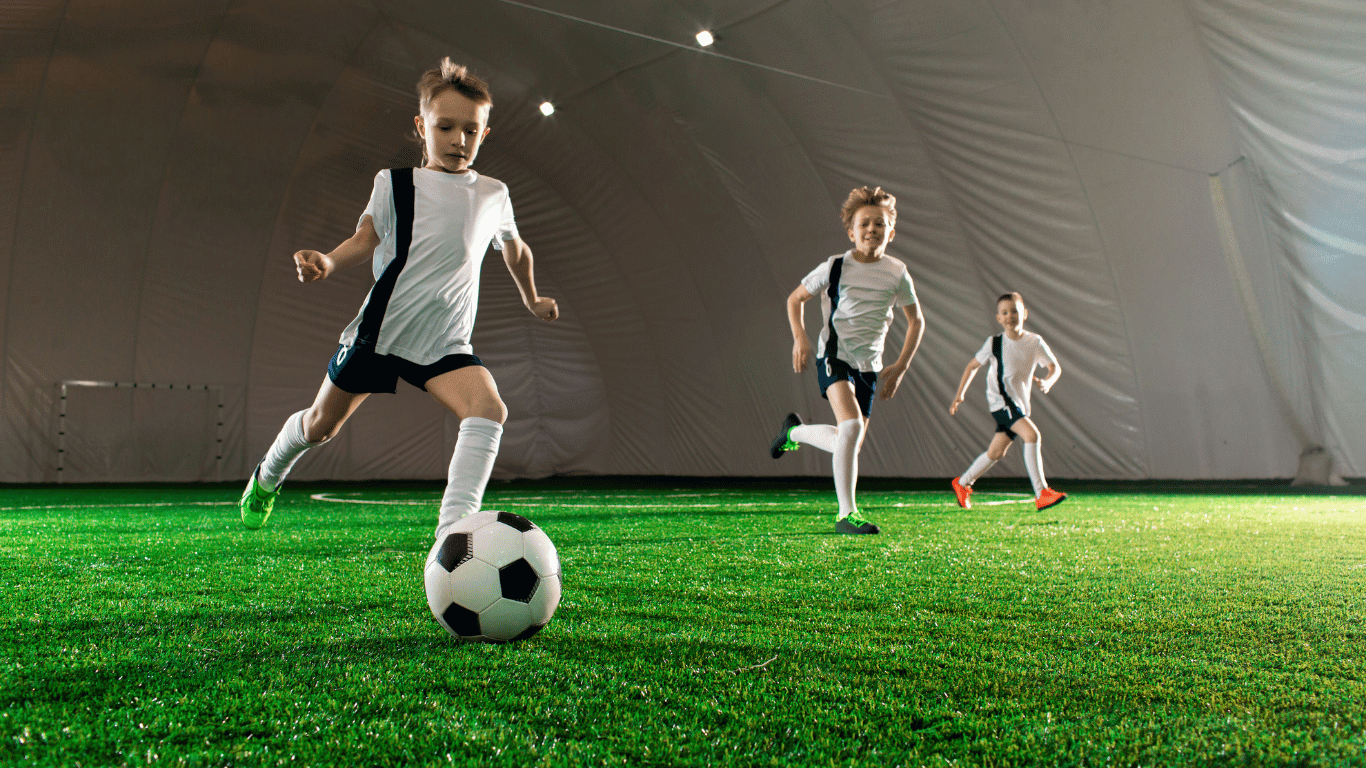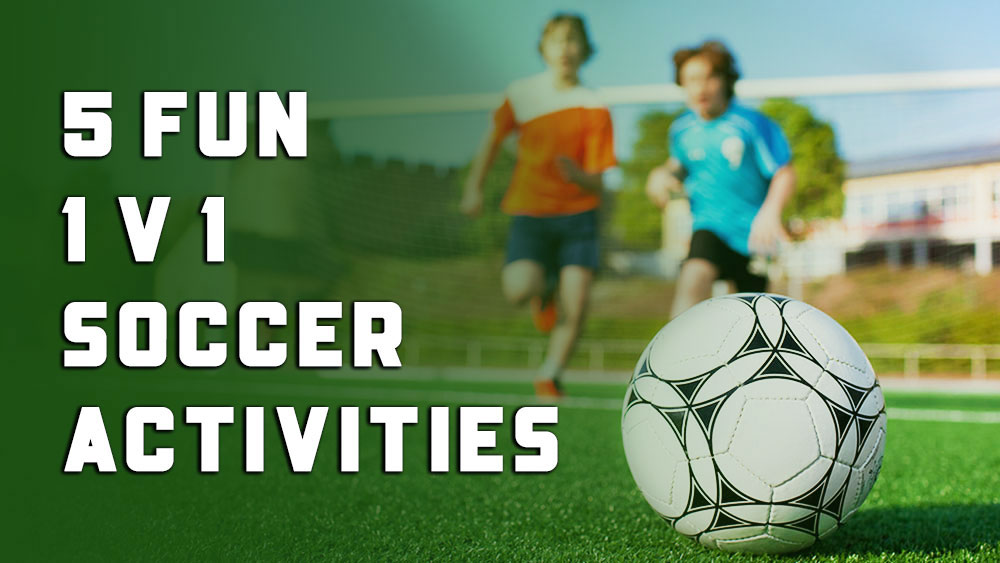12 Soccer Warm-Up Drills to Start Strong (2024 Update)
Warming up might not be the flashiest part of soccer, but it’s one of the most important. A proper warm-up does more than just get your muscles moving—it prepares your body and mind to play at your best and helps prevent injuries. Whether you’re heading into a high-intensity match or a regular training session, how you start sets the tone for everything that follows.
That’s why we’ve put together this updated list of 12 essential soccer warm-up drills for 2024. These aren’t just basic jog-around-the-field routines. Each drill is designed to improve mobility, increase heart rate, engage muscle memory, and get players mentally ready to compete—all in a fun, efficient way.
Perfect for teams of any age or skill level, these drills can be mixed and matched depending on the focus of the session. Ready to get moving? Let’s dive in.

1. Jog and Dynamic Stretch Circuit
What it targets: Cardiovascular warm-up, flexibility, coordination
Start with a light jog around the field or designated area. After a few laps, add dynamic stretches between jogs—things like high knees, butt kicks, lunges with a twist, arm circles, and side shuffles.
Pro tip: Avoid static stretching at the start of your session. Keep the body moving to raise your core temperature.
2. Quick Feet Ladder Drill
What it targets: Agility, coordination, and muscle activation
Use an agility ladder and move through it with different footwork patterns—like one-foot hops, in-and-out steps, or lateral shuffles.
Pro tip: Focus on fast, clean footwork instead of just rushing. Keep your head up and maintain balance.
3. Cone Weaving Dribble
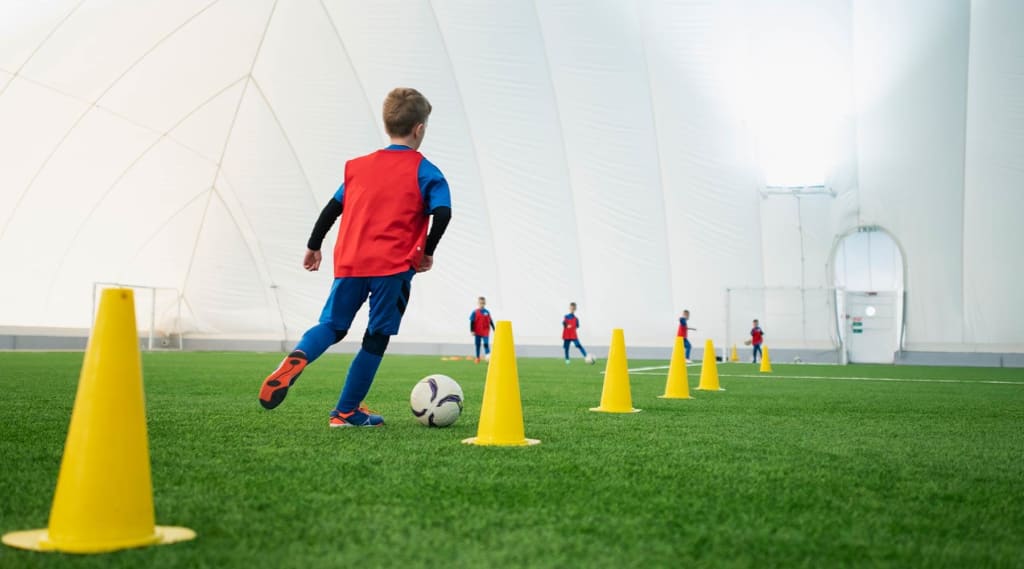
What it targets: Ball control, balance, and rhythm
Set up a line of cones and have players dribble through them at a moderate pace. This helps connect mind and foot while getting touches on the ball early in the session.
Pro tip: Use both feet. Encourage players to try outside and inside foot dribbles.
4. Partner Passing Warm-Up
What it targets: Passing accuracy, touch, and communication
Players pair up and pass the ball back and forth using both feet. Start slow, then increase pace and distance gradually. Add in one-touch or two-touch sequences.
Pro tip: Reinforce strong communication—players should call for the ball and keep eye contact.
5. Rondo (Keep-Away Circle)
What it targets: Passing under pressure, awareness, reaction speed
Set up a small circle with players on the outside and 1–2 defenders in the middle. Outside players keep possession using quick passes while defenders try to win the ball.
Pro tip: Keep it fun and competitive. Rotate defenders every 30–45 seconds.
6. High Knees and Butt Kicks Line Drill
What it targets: Leg activation, cardiovascular readiness
Set up cones in a straight line. Have players alternate running high knees to one cone, then jog back. Next round: butt kicks. Repeat a few rounds to get blood flowing.
Pro tip: Encourage good form—knees up, arms pumping, core engaged.
7. Triangle Passing Drill
What it targets: Touch, angle play, and quick thinking
Form a triangle with three players and pass the ball around the shape. Rotate players after a few minutes and practice both directions.
Pro tip: Use two touches—one to receive, one to pass. Add a fourth player to pressure the triangle if needed.
8. Shadow Defending
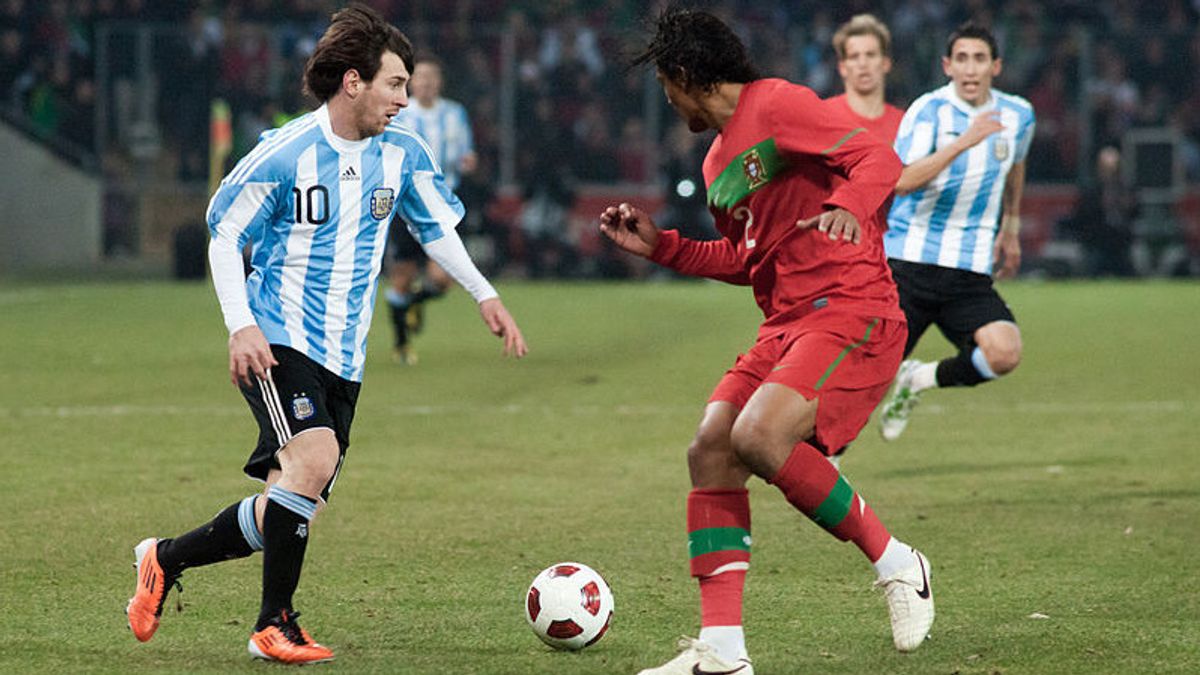
What it targets: Defensive footwork, body positioning
Pair players together—one is the attacker (without a ball), the other is the defender. The attacker moves around randomly, and the defender mirrors their movement to practice defensive shadowing.
Pro tip: Teach defenders to stay low, balanced, and on their toes—ready to shift or pivot.
9. Mini Scrimmage (2v2 or 3v3)
What it targets: Game awareness, decision-making, creativity
A short, small-sided game with limited players gets everyone moving and thinking like it’s match time. These mini scrimmages are great for activating tactical thinking early.
Pro tip: Use small goals or pug nets. Set time limits to increase intensity.
10. Sprint Variations
What it targets: Explosiveness, acceleration, recovery
After the initial cardio warm-up, short sprints help wake up the fast-twitch muscle fibers. Do 5–6 sprints of 10–20 yards, with walking recovery in between.
Pro tip: Add change-of-direction elements like zig-zags or cone touches for variety.
11. Passing Gates Drill
What it targets: Accuracy, awareness, passing under pressure
Set up gates using two cones spaced 2–3 yards apart. Players work in pairs to pass the ball through each gate, moving to a new gate after each pass.
Pro tip: Time the drill to build urgency. Use weaker feet or restrict to one-touch as players warm up.
12. Ball Mastery Combos
What it targets: Touch, rhythm, and total foot control
Players move in a small space doing quick footwork combinations—toe taps, inside-inside, sole rolls, pull-push, and more.
Pro tip: Keep the pace light and rhythmic to ease into more intense footwork drills later in the session.
Advanced Tips for Effective Warm-Ups
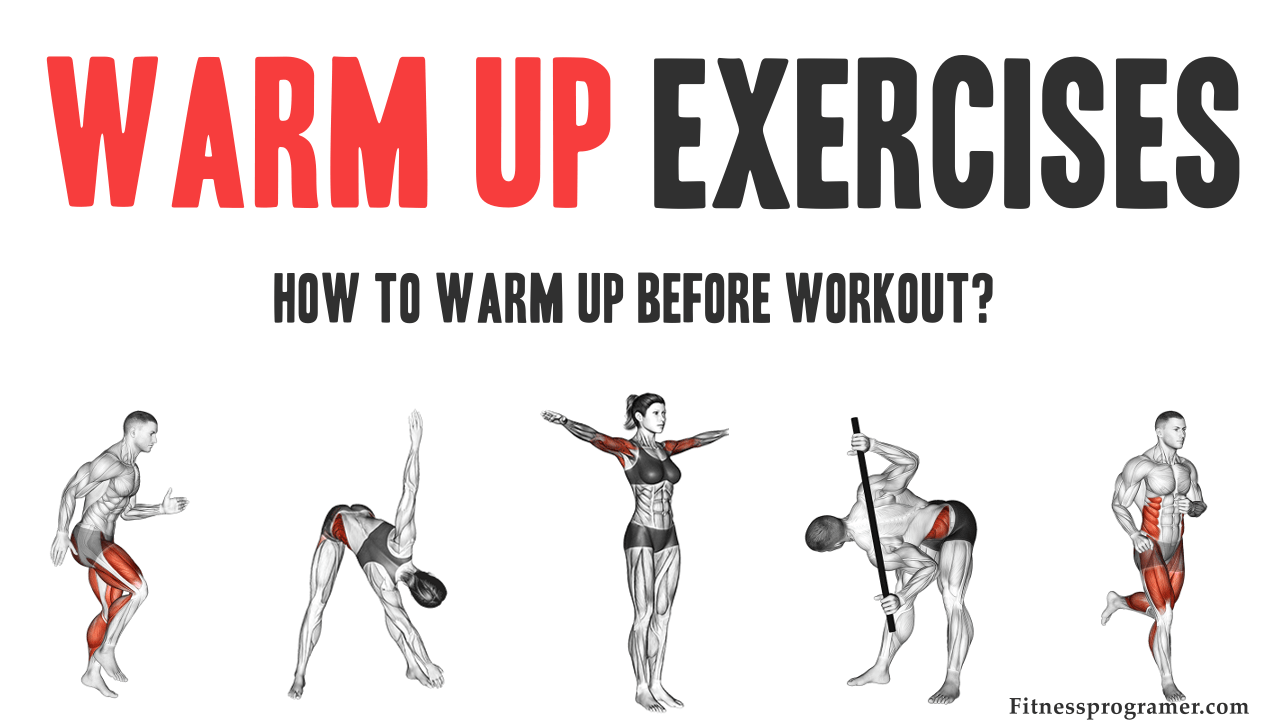
- Tailor drills to the session focus. If you’re doing a shooting-focused session, include some passing or reaction-based warm-ups.
- Keep players engaged. Rotate drills every few minutes to prevent boredom.
- Use the warm-up to build energy. The goal is to finish the warm-up feeling sharp and excited—not exhausted or bored.
- Warm up the mind too. Use communication-heavy drills to switch players into “game mode.”
Table of Contents
FAQs – Soccer Warm-Up Drills
Q1: How long should a proper warm-up take?
A: A good warm-up should last between 15 to 25 minutes, depending on age and intensity of the session or match.
Q2: Should kids do different warm-ups than adults?
A: The structure is similar, but with kids, keep it more playful and energetic. Use games like tag, relay races, or ball-based mini-games.
Q3: Can warm-ups help reduce injuries?
A: Absolutely. Proper warm-ups increase blood flow, activate muscles, and prep joints for movement—reducing the risk of strains and tears.
Q4: Should I stretch before or after warm-ups?
A: Use dynamic stretching during warm-ups. Save static stretches (like holding a hamstring stretch for 30 seconds) for the cool-down period after training.
Q5: Can I warm up without a ball?
A: Yes, but it’s best to include ball work to engage technical skills early. A mix of both is ideal.
Final Thoughts: A Great Warm-Up Sets the Tone
If you want to play sharp, avoid injuries, and dominate the session or game ahead—don’t skip your warm-up. It’s more than just a physical checklist. A good warm-up activates your muscles, sharpens your brain, and gets you in the right mindset to perform at your best.
These 12 soccer warm-up drills cover everything: mobility, touch, communication, fitness, and ball control. Rotate them based on your team’s goals, the weather, or player age. Keep things fresh, fast-paced, and fun—and your players will start each session ready to roll.


